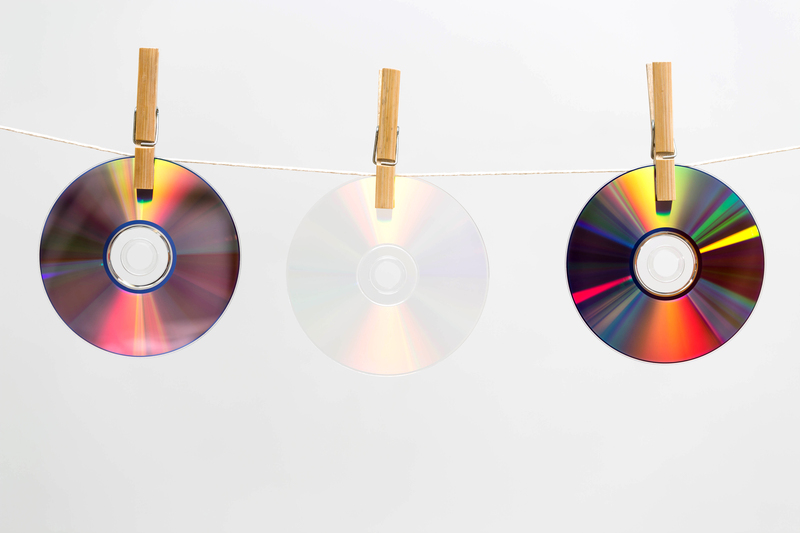Reviving the Forgotten: Upcycling Ideas for a More Sustainable Lifestyle
In our consumer-driven world, disposable items, fast fashion, and mass production often lead to overwhelming waste. However, with growing awareness about environmental issues, individuals are increasingly turning towards more sustainable living. One of the most impactful and creative practices is upcycling. Upcycling involves transforming unwanted or discarded materials into new, useful products--breathing new life into forgotten items and reducing landfill waste. If you're looking to embrace a more eco-conscious lifestyle, discover how upcycling can become a cornerstone of your sustainability journey.
What Exactly is Upcycling and Why Does It Matter?
Upcycling, sometimes referred to as "creative reuse," distinguishes itself from recycling by improving the original item rather than just breaking it down to its raw materials. This process not only conserves resources but adds value and personal flair to your everyday life.
- Reduces Waste: By repurposing materials, upcycling keeps objects out of landfills.
- Conserves Resources: Less energy is used compared to manufacturing new items or recycling at industrial plants.
- Promotes Creativity: Each upcycled item becomes a unique creation, reflecting personal taste and ingenuity.
- Encourages Sustainable Consumption: By valuing what we already have, we challenge the fast-consumption mindset.

The Environmental and Social Benefits of Upcycling
Engaging in upcycling projects directly addresses several major environmental issues:
- Lower Carbon Footprint: Upcycled goods don't require shipping, industrial processing, or as much packaging as new products.
- Preservation of Resources: Fewer raw materials are harvested or mined, preserving ecosystems and habitats.
- Community Building: Group upcycling efforts foster collaboration and a sense of local pride.
- Awareness Raising: Sharing upcycling ideas inspires others to reconsider their own habits.
With the right mindset and resources, anyone can start upcycling, reducing waste and enhancing sustainability in their daily lives.
Practical Upcycling Ideas for Different Parts of Your Life
Upcycling in the Home
Transforming household items is an easy entry point into a more sustainable lifestyle. Here are innovative ways to turn forgotten objects into functional decor:
- Glass Jars: Cleaned-up jars make excellent storage containers for spices, grains, or even office supplies. Decorate with fabric or paint for a chic touch!
- Old Furniture: Breathe new life into worn tables or chairs with a fresh coat of non-toxic paint or by replacing hardware. Convert ladders into bookshelves or blanket racks.
- Broken Dishes: Use shards of old porcelain to create unique mosaic tabletops or wall art.
- Tin Cans: Turn empty cans into rustic planters, pencil holders, or even outdoor lanterns by punching decorative holes for light to shine through.
Fashion and Accessories
Textiles and clothing contribute heavily to landfill waste. Upcycle your wardrobe to stand out with sustainable style:
- T-Shirts: Cut and knot old shirts into reusable shopping bags or headbands.
- Jeans: Transform worn denim into patchwork quilts, cushion covers, or tote bags.
- Jewelry: Repurpose beads, buttons, and old metals into new statement pieces.
- Shoes: Embellish old shoes with paint, patches, or fabric scraps for a brand-new look.
Upcycling in the Garden
Give outdoor spaces an eco-friendly twist with these sustainable upcycling ideas:
- Plastic Bottles: Build vertical gardens by cutting and stacking large plastic bottles.
- Pallets: Use discarded wooden pallets for raised garden beds or compost bins.
- Old Tires: Paint and stack tires into colorful planters or playground furniture.
- Coffee Grounds: Compost used grounds or use directly as fertilizer for acid-loving plants.
Tech Upcycling
E-waste is a fast-growing environmental threat. Instead of tossing old devices, try:
- Computer Parts: Turn circuit boards into coasters, clocks, or jewelry.
- Smartphones: Repurpose as security cameras, music players, or digital photo frames.
- Charging Cables: Braid old cables into durable keychains or use for cable management.
Creative Upcycling Projects for Every Skill Level
Beginner Upcycling Projects
- Wine Cork Bulletin Boards: Glue corks onto a board to display notes or photos.
- Magazine Coasters: Roll up strips of old magazines and glue them to make unique drink coasters.
- Shoe Box Charging Station: Cut holes for cables to create a tidy, hidden charging hub.
- Cereal Box Desk Organizers: Trim and decorate boxes for storing papers or mail.
Intermediate Upcycling Projects
- Drawer Shelves: Mount old drawers on walls for instant shelving.
- Sweater Pillows: Transform shrunken sweaters into cozy pillow covers.
- Window Frame Picture Hangers: Add hooks or twine to vintage window frames for a rustic photo display.
- Book Planters: Hollow out thick books to grow succulents or other small plants.
Advanced Upcycling Projects
- Bathtub Sofa: Convert a clawfoot bathtub into a stunning indoor or outdoor seat.
- Pallet Coffee Table: Stack, sand, and stain shipping pallets for a chic, industrial coffee table.
- Bicycle Wheel Pot Rack: Hang a painted wheel from the ceiling to display kitchen pots and pans.
- Headboard Benches: Repurpose an old headboard into a bench for your entryway or garden.
Essential Tips for Successful Upcycling
- Start Small: Begin with simple projects to build confidence.
- Use Safe Materials: Ensure paints, adhesives, and finishes are non-toxic, especially for kitchen items or toys.
- Don't Rush: Allow plenty of time--rushed projects can result in wasted materials.
- Get Inspired: Sites like Pinterest or Instagram are gold mines for creative ideas.
- Swap and Share: Participate in local upcycling workshops or swap meets for materials and inspiration.
How to Source Materials for Upcycling
Part of the joy of upcycling is discovering the potential in forgotten objects. Here's where to look:
- Your Home: Start by sorting through storage spaces and attics.
- Friends & Neighbors: Ask around--many people are happy to donate unwanted items.
- Thrift Stores & Flea Markets: Look for unique, affordable materials and inspiration.
- Curb Alerts: Keep an eye out for furniture or objects left on the curb for pickup.
Upcycling is as much about community as creativity. Don't hesitate to involve your family, friends, or local groups in collaborative upcycling sessions. You might be surprised by the talents and ideas that emerge!
Upcycling vs. Recycling: Why Upcycling Wins for Sustainability
While recycling is vital, upcycling often has superior environmental benefits:
- Lower Energy Use: No need for energy-intensive transformation--upcycling uses existing items with minimal intervention.
- Reduces Pollution: Fewer chemical processes are involved, which minimizes environmental impact.
- Immediate Impact: Upcycling keeps items in use longer, reducing the demand for new goods and extending product life cycles.
Choosing upcycling means seeing value where others see waste--an essential shift for building a more sustainable future.

Making Upcycling a Lifestyle: Beyond One-Off Projects
To truly revive the forgotten, consider how upcycling can become a daily habit:
- Gift Upcycled: Handmade gifts carry more meaning--and less environmental cost.
- Teach Kids: Encourage children to think creatively and value resources through fun, hands-on projects.
- Showcase Your Work: Sharing your creations online or at community fairs inspires others to join the movement.
- Support Upcyclers: Purchase from artists and makers who integrate sustainability into their enterprise.
Upcycling isn't just an eco-trend--it's a mindset that respects resources, values creativity, and prioritizes the health of our planet for future generations.
Reviving the Forgotten: Closing Thoughts for a Greener Tomorrow
Upcycling ideas for a more sustainable lifestyle offer more than just an environmental solution--they enrich our lives with creativity, connection, and purpose. Every upcycled project, from a hand-painted jar to a reimagined bicycle wheel, represents a tangible step toward sustainability. By embracing the practice of reviving the forgotten, you not only reduce waste but also contribute to a culture of mindful consumption.
Next time you're about to throw something away, ask yourself: How could this be upcycled? Let your imagination take over, and you'll find that the possibilities are endless.
Together, let's revive the forgotten, one project at a time, and build a more sustainable--and beautiful--world.
